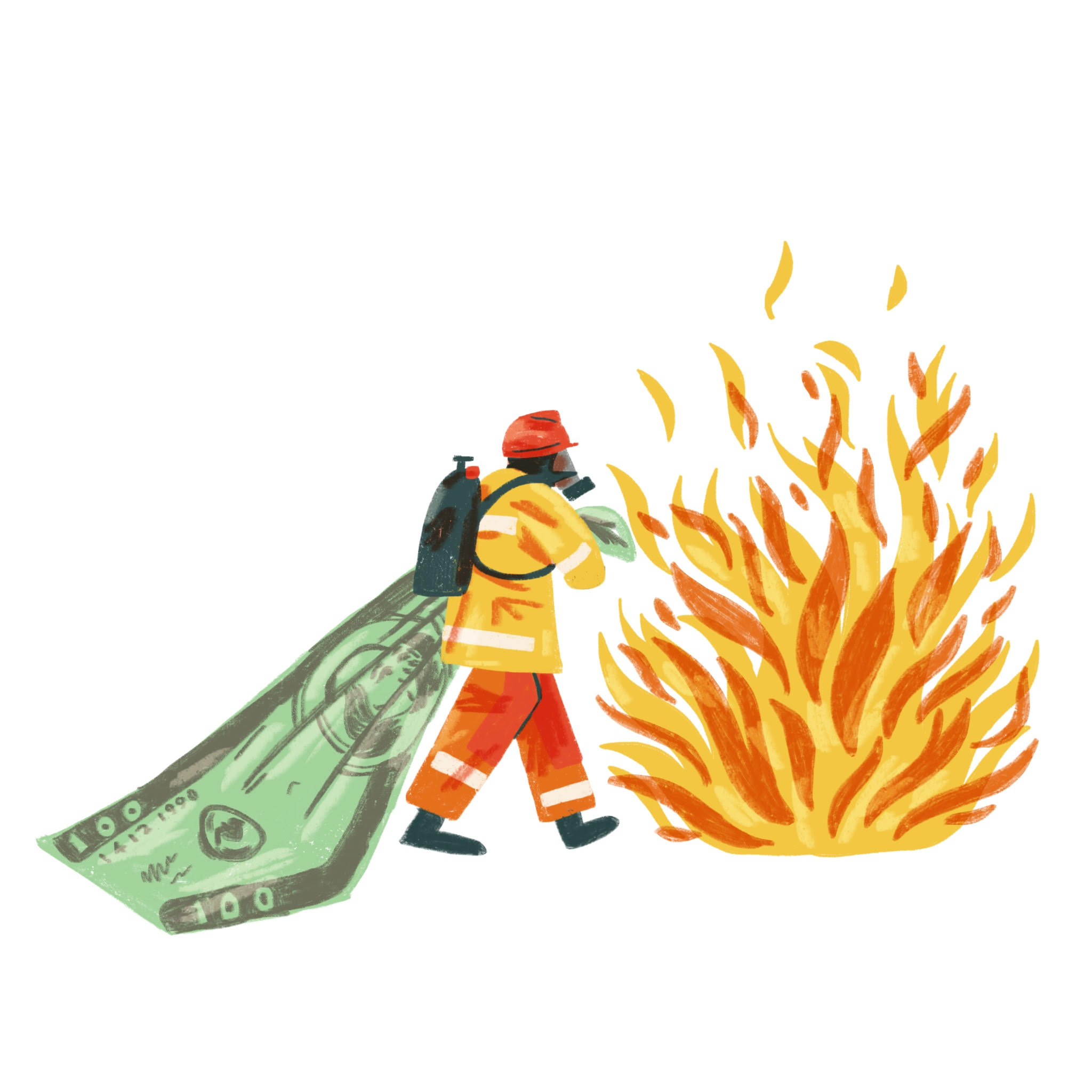Key Findings
- The financial fallout of natural disasters in 2021 ($215 billion) is projected to be higher than for the previous two years combined ($162 billion)
- Winter Storm Uri (Texas, 2021) is estimated to be the costliest weather disaster in the last 30 years with an estimated $195 billion in damages
- Natural disasters cost each affected household $7,100 in 2019, that figure is projected to rise to $10,050 in 2021
- Wildfires are costliest disasters to homeowners, costing an average of $10,000 in disaster repair
- Around 50% of the disaster repair costs is shouldered by homeowners out of pocket, depending on the particulars of insurance coverage and government support
- Texas, Louisiana and Florida are the states most affected by the natural disasters financially, all with more than $200 billion in damages since 1980
- Last year saw more than twice as many natural disasters (208) than 2019 (89)
- In the last five years, the U.S. lost $120 billion a year to extreme weather events
Every year, the United States gets hit with hundreds of natural or weather disasters. Wildfires in California, hurricanes in Florida, tornadoes in Texas, ice storms in Illinois all regularly appear and disappear from the national news cycle at different times of the year.
What stays for longer is a trail of destruction they leave behind, often accompanied by a huge bill local authorities, insurers, and people directly affected have to shoulder. According to the National Centers for Environmental Information, that bill was over $120 billion in 2020 and over $600 billion over the last five years.
For homeowners, the financial burden of natural disasters comes in the form of post-disaster repair, costing thousands of dollars each year.
In this article, we examine the last thirty years of extreme weather events, explore trends in their number and cost over time, and estimate the cost of natural disasters to individual homeowners and the country as a whole.
More Frequent, More Costly: Natural Disasters in the U.S. Over the Last Thirty Years
Looking at the last three decades, we can notice a gradual increase in both the number of disasters and their financial impact.
In the 90s, the number of events lingered around 20-30 per year, in the 2000s it was more often than not somewhere around 70 or more, while the last decade features five years with over 100 natural disasters inside each.
Propelled by climate change, the increase in the number of extreme weather events inevitably means their financial toll is also rising. Last year alone saw a record of 208 disasters, the financial toll of which reached $123 billion.
Earlier this year, the U.S. was hit by a severe winter storm affecting Southern, Midwestern, and later even Northeastern states. This storm later dubbed Winter Storm Uri caused the most amount of destruction in Texas and, according to the CBS News report, is going to cost the country almost $200 billion.
If confirmed, it would be the biggest natural disaster to hit the United States since Hurricane Katrina, whose financial toll is estimated at $172.5 billion after adjusting for inflation. Not only that, it would also mean that natural disasters in 2021 already cost more than $200 billion, and that’s before the hurricane season even started.
The biggest spikes we see in the cost of disasters over the years align with some of the biggest hurricanes (Katrina in 2005, Sandy in 2012, Irma in 2017), but the overall trend is hard to deny. The amount of damage the weather disasters leave behind is on the rise.
How Much You Are Paying for it: The Financial Burden of Natural Disasters for Homeowners
Billions of damage wrought by extreme weather are often due to significant destruction of public infrastructure and company property, but how much of a financial impact do these disasters have on individual homeowners?
The most recent data on the amount spent on disaster repair from the American Housing Survey of 2019 suggests that homeowners spent $36.7 billion on fixing up their homes after natural disasters, with a median spend of $7,150 per household affected.
This is somewhat lower than the 2017 estimate of $8,150 spent on disaster repair per household, but it’s worth noting that three of the costliest natural disasters to hit the U.S. happened that same year.
Projecting these figures into 2021 using the amount of damage we know the disasters have caused in recent years, the total cost of disaster repair can reach as high as $51.6 billion.
Assuming the patterns of damage caused by extreme weather events remain in line with previous years, the average cost of disaster repair could reach $10,000 for each household affected. Being 40% more than homeowners spent in 2017 and 23% higher than the previous peak average disaster spend in 2015, this amount would be a new historic high.
It’s reasonable to assume that the disaster repairs are at least partially covered by insurance, assuming the affected homes were insured in the first place. To what extent insurance or government help covers the disaster repair depends on a range of factors, such as insurance value, % deductible, special provisions for disaster coverage, etc.
According to the Congressional Budget Office report on storms and hurricanes, “a combination of private insurance coverage for wind damage, federal flood insurance, and federal disaster assistance would cover roughly 50 percent of losses to the residential sector.”.
Findings from the American Housing Survey seem to align with this estimate. About 50% of homeowners who had to make a post-disaster repair in 2019 claim to have financed most of the cost through homeowners insurance. A further 36% said they paid for these repairs with their own cash or savings.
Wildfires or Hurricanes: Which Natural Disasters Cause the Most Damage?
Which extreme weather events are the costliest to homeowners in terms of fixing the damage they leave in their wake? Based on the findings of the American Housing Survey, it’s the fires, for which a typical cost of repair is at $10,000.

Tornados and hurricanes are certainly more common than wildfires, especially in certain parts of the United States, but on average their damage costs homeowners 30% less to repair – $7,000.
Flooding, a disaster that often follows a hurricane, has potential to cause more damage to homes than the hurricane itself. The average amount homeowners spent on fixing their home after the flood was $7,600.
American Housing Survey doesn’t have any data on costs of repair after winter storms, freezes, or droughts, but it does show that landslides and earthquakes typically cost homeowners an average of, respectively, $6,760 and $4,000 to repair.
Stormy States: Where Are Different Natural Disasters Most Common?
When we look at how different parts of the United States are affected by all these natural disasters, a distinct pattern begins to emerge.
Which states have been most affected by the natural disasters and extreme weather by volume? Based on data from the National Oceanic and Atmospheric Administration (NOAA), the Southern States of the U.S. appear to be the country’s most affected area by natural disasters.
Texas, for one, has seen 129 disasters each with a multi-million dollar fallout, which is more than four extreme events per year, or one every three months. The latest is Winter Storm Uri, which caused massive power outages, as well as massive disruptions of water and heating supply due to bursting pipes.
Georgia, Alabama, North Carolina, and Illinois all saw over 90 natural disasters since the start of 1980, mostly suffering from storms, cyclones, and winter storms.
In terms of local likelihood for each type of natural event, natural disasters naturally correlate with the broader climate of each region, as you might expect.
For the majority of the states, the most frequently occurring natural disasters in the last 30 years are storms. Storms are formed over landmass and tend to be smaller in scale, unlike hurricanes which are formed over water, and which are most common in Florida and Hawaii.
In states with vast amounts of woodland, such as California, states in the Pacific Northwest, as well as Idaho and Wyoming, wildfires are most prevalent. New England States, from Connecticut and going North, have been most troubled by winter storms.
Finally, states with expansive deserts and prairies, like Nevada, Arizona, and the Dakotas, are marred by droughts over any other type of cataclysm.
In the Billions: The Financial Impact of Weather Disasters in Each State
As the state with by far the highest number of disasters (in part due to its size), Texas is the unfortunate leader in this ranking, with over $350 billion lost to extreme weather in the last 30 years. That translates to an astounding loss of about $11.5 billion every year.
In second place is Louisiana with a total of $245 billion in damages from 81 disasters. Worth noting, $172 billion (70%) of that amount is due solely to Hurricane Katrina, which hit the state way back in 2005.
The only other state with damages in excess of $200 billion is Florida, whose tally of disasters is only about half that of Texas. About a quarter (22%) of that figure is down to the impact left on the Sunshine State by Hurricane Irma in 2017.
Sources and Methodology
All data on cost of natural disasters has been taken from the NOAA National Centers for Environmental Information (NCEI) U.S. Billion-Dollar Weather and Climate Disasters (2021) and American Housing Survey (AHS).
Where the financial impact of a natural disaster was given as a range estimate, e.g. $200-$400 million, a mid-point of that estimate was taken as a measure of the financial impact of that extreme weather event.
NOAA figures used only include events with millions in damage caused, Meaning, the states that have fewer large-scale disasters, don’t necessarily have fewer storms, droughts, freezes, floods, etc overall.
The amount spent on disaster repair in 2021 was estimated using the trends in the number of natural disasters, their financial impact, the number of homeowners, and previous estimates of such spend using the data sources listed above.
Illustrations by Sonny Ross



